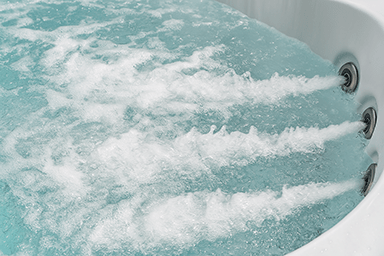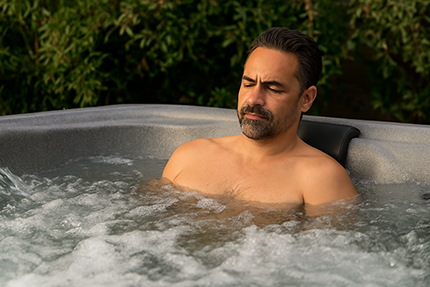Hydrotherapy is more than just a relaxing soak—it’s a time-tested, research-supported healing method. Whether you’re dealing with muscle soreness, chronic pain, or stress-related fatigue, spending time in a hot tub can provide tangible physical and mental benefits. With more people seeking at-home wellness options, hydrotherapy through hot tubs has emerged as a powerful tool for recovery, rejuvenation, and relaxation.
In this article, we’ll explore the science behind hydrotherapy and how hot tubs can significantly promote physical recovery and emotional well-being.
What Is Hydrotherapy?
Hydrotherapy, also known as water therapy, involves using water at varying temperatures to relieve discomfort and promote physical well-being. People often use hydrotherapy to treat chronic conditions, recover from injuries faster, and relieve muscle pain. The therapeutic benefits of hydrotherapy date back thousands of years, from ancient Egyptian baths to Roman thermal spas.
Today, physical therapists, athletic trainers, and wellness professionals actively incorporate hydrotherapy into recovery and rehabilitation programs. Hot tubs are ideal for this purpose, combining warm water, buoyancy, and jet massage in a private, convenient setting.

How Hot Tubs Support the Body's Recovery Systems
1. Increased Circulation and Oxygenation
Warm water immersion causes vasodilation—the widening of blood vessels—which enhances circulation throughout the body. This effect improves the delivery of oxygen and essential nutrients to injured or fatigued muscles. In return, the body can more efficiently eliminate metabolic waste like lactic acid, which contributes to muscle soreness after physical activity.
According to a study published in the Journal of Physiology, immersion in warm water can increase blood flow by up to 200%, depending on the temperature and duration of the soak (Wilcock et al., 2006). Improved circulation is essential for healing damaged tissues and reducing inflammation, making hot tubs a vital tool for injury recovery.
2. Muscle Relaxation and Pain Reduction
The warmth of the water naturally relaxes tight muscles and eases joint stiffness. When submerged in water, the body becomes buoyant, reducing the pressure on joints and spine. This weightlessness can provide immediate relief for individuals dealing with arthritis, chronic pain, or physical injuries.
Jet therapy also contributes to muscle recovery. When strategically placed jets massage specific areas of the body, they stimulate the soft tissue, improving flexibility and reducing tension. According to the National Center for Biotechnology Information (NCBI), hydrotherapy can significantly reduce muscle pain and spasms by stimulating nerve endings and increasing endorphin production (NCBI, 2014).
3. Enhanced Athletic Recovery
Athletes, both amateur and professional, increasingly rely on hydrotherapy to aid in performance and recovery. Intense physical exertion causes microtears in muscle fibers, leading to inflammation and soreness. Hydrotherapy can help reduce delayed onset muscle soreness (DOMS) and accelerate healing.
In a 2021 study published in the International Journal of Sports Physical Therapy, researchers found that athletes who engaged in hot water immersion after strenuous exercise experienced less muscle pain and recovered faster than those who didn’t (Higgins et al., 2021). Additionally, alternating hot and cold hydrotherapy sessions—known as contrast therapy—can further boost recovery by stimulating lymphatic drainage and reducing swelling.
4. Reduction of Stress and Cortisol Levels
Hydrotherapy heals the body and soothes the mind. Immersing yourself in warm water creates a calming sensory experience that activates the parasympathetic nervous system—the part of your body responsible for “rest and digest” functions. This decreases the production of cortisol, the body’s primary stress hormone.
Lower cortisol levels have a domino effect on the body. You’ll notice improved sleep quality, better digestion, reduced anxiety, and enhanced mood. According to a report from Healthline, soaking in a hot tub for as little as 15 minutes can significantly reduce stress and promote relaxation (Healthline, 2020).
5. Better Sleep Quality
Many people struggle with falling or staying asleep due to stress, physical discomfort, or poor sleep hygiene. Hot tubs can serve as a nightly ritual to improve sleep quality. As your body temperature rises during a soak and gradually cools afterward, your nervous system prepares for deep rest.
A study in Sleep Medicine Reviews found that passive body heating—like soaking in warm water—can help people fall asleep faster and improve sleep quality. (Haghayegh et al., 2019). For individuals suffering from insomnia or disrupted sleep, hydrotherapy may offer a natural, non-pharmaceutical solution.
6. Relief from Chronic Conditions
Hydrotherapy can be life-changing for people with chronic conditions such as fibromyalgia, arthritis, or lower back pain. The Arthritis Foundation endorses the use of warm water therapy to reduce pain, improve mobility, and strengthen muscles without adding strain to the body.
Similarly, fibromyalgia patients often report lower pain levels, increased range of motion, and improved quality of life when incorporating hydrotherapy into their routine. Because hot tubs provide a controlled and consistent environment, users can reap these benefits safely and comfortably from home.
7. Mental Clarity and Emotional Balance
There is growing evidence that hot tub use may help with mental health challenges such as anxiety, mild depression, and fatigue. The combination of warm water, massage, and solitude can create a meditative state that clears the mind and uplifts the spirit.
In an increasingly busy and overstimulated world, hot tubs offer a rare opportunity to disconnect and engage in mindfulness. Taking 20 to 30 minutes a day to breathe deeply, stretch gently, and let your mind unwind can significantly enhance emotional resilience and clarity.
8. Accessibility and Ease of Use
Unlike other wellness treatments, hot tubs are easy to access and use consistently. There’s no need to schedule appointments, drive to a clinic, or rely on external providers, making hydrotherapy more sustainable and effective over the long term. You can adapt your hot tub to support your goals—whether recovering from surgery, managing stress, or training for an event.
Moreover, modern hot tubs offer customizable features like adjustable jets, ergonomic seating, and lighting, allowing users to tailor their sessions to their specific needs.
How to Maximize the Benefits
Staying consistent with your hot tub routine is essential to get the most from hydrotherapy.
- Duration: Aim for 15 to 30 minutes per session.
- Temperature: Keep water between 100°F and 104°F. Never exceed 104°F.
- Hydration: Always drink water before and after soaking.
- Stretching: Gentle stretches in the tub can enhance flexibility.
- Timing: Soak after exercise for recovery or before bed for sleep.

Who Should Avoid Hot Tub Use?
While hydrotherapy offers numerous benefits, it may not be suitable for everyone. People with heart conditions, low blood pressure, or pregnancy should consult with a healthcare provider before using a hot tub. Similarly, children should be supervised and limited to shorter soak times and lower temperatures.
Conclusion
Hydrotherapy in hot tubs offers a science-backed way to boost physical recovery, ease stress, and improve overall well-being. As more research confirms the benefits of warm water immersion, it’s clear that hot tubs are no longer just a luxury—they’re a powerful wellness tool.
From athletes seeking faster muscle recovery to individuals managing chronic pain or high levels of stress, hydrotherapy can deliver consistent relief and long-term health benefits. A home hot tub brings healing out of clinics and spas and into the comfort of your backyard.
Ready to experience the healing power of hydrotherapy for yourself?
Discover how a hot tub from Love’s Hot Tubs can transform your recovery routine and elevate your well-being—right from your own backyard.
Visit our showroom this Saturday to explore your options and take the first step toward total relaxation.
Your journey to recovery starts here.
References:
- Wilcock, I. M., Cronin, J. B., & Hing, W. A. (2006). Physiological response to water immersion. Journal of Sports Medicine, 36(9), 747-765.
- Haghayegh, S., Khoshnevis, S., Smolensky, M. H., Diller, K. R., & Castriotta, R. J. (2019). Before bedtime, passive body heating is done by a warm shower or bath to improve sleep. Sleep Medicine Reviews, 46, 124-135.
- Higgins, T. R., Greene, D. A., & Baker, M. K. (2021). Recovery Strategies in Endurance Athletes. International Journal of Sports Physical Therapy, 16(3), 653–664.
- Mooventhan A, Nivethitha L. Scientific evidence-based effects of hydrotherapy on various systems of the body. N Am J Med Sci. 2014 May;6(5):199-209. doi: 10.4103/1947-2714.132935. PMID: 24926444; PMCID: PMC4049052.
- Healthline. (2024). 7 Benefits of Soaking in a Hot Tub.

